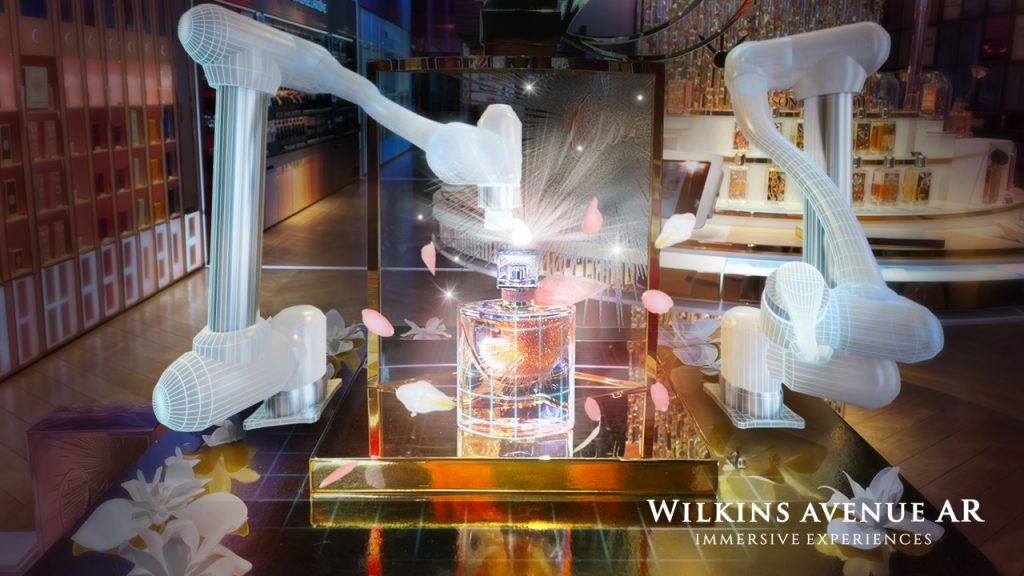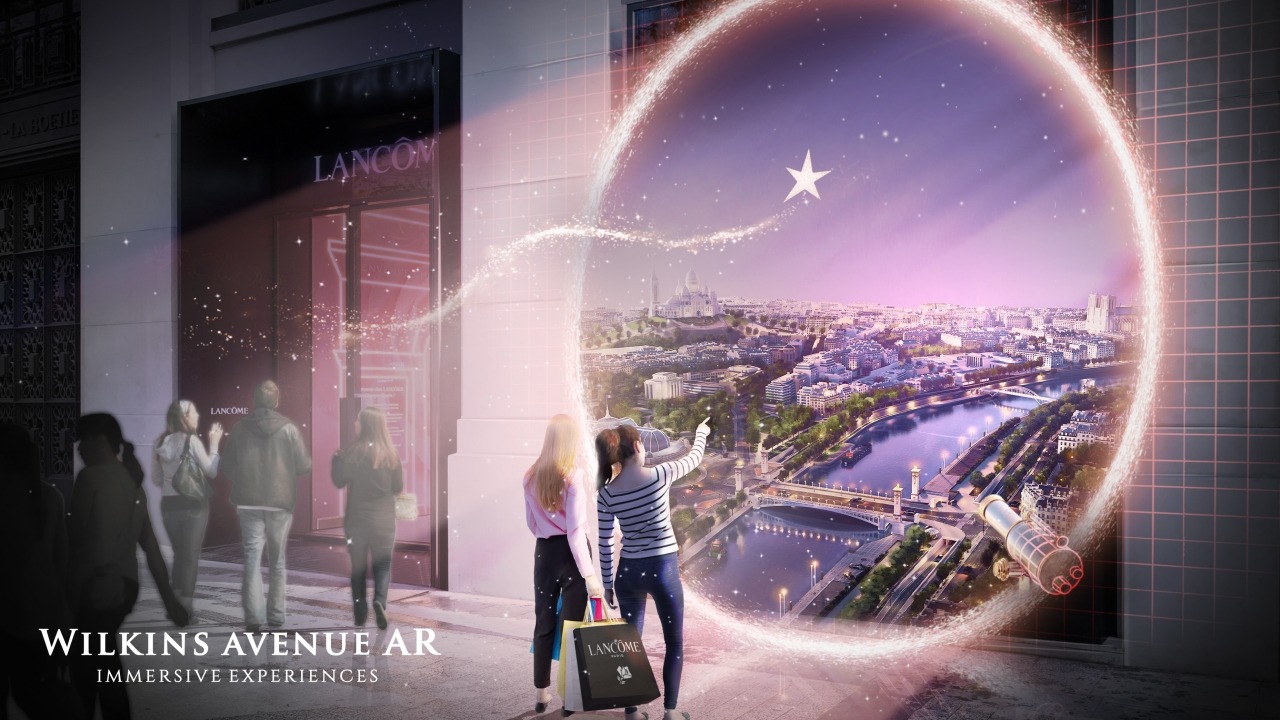Thibault Mathieu is an immersive technology entrepreneur who worked the mixed reality frontier early on with OUT THERE, a musical experience for Magic Leap released in late 2019. Five years on, this promise is being realized through the ambitions of the latest headsets (Quest 3, Apple Vision Pro…) and a Wilkins Avenue AR portfolio built around MR location-based content for brands.
Read our interview of 2019: “We created the first musical in mixed reality” – Thibault Mathieu (Wilkins Avenue)
Wilkins Avenue and the acceleration of the L’Oréal/Meta incubator
Thibault Mathieu – Since 2019, and with an initial ambition around consumer entertainment, Wilkins Avenue AR has expanded into content production for brands. And particularly luxury brands, which have a real need for storytelling. And not just marketing! Lancôme, Hermès, Cartier… We start each discussion around the intentions, emotions and narrative elements that are important to them. The connection with our expertise came naturally, in a market open to that. For immersive, this is important, because we put the technology in the background. So it’s a great vehicle for innovating our proposals by focusing on the story to be told.
T. M. – From this transition, we were lucky enough to join the L’Oréal and Meta incubator (launched in early 2023) to encourage business initiatives dedicated to creative and inclusive development on the Web3 or metaverse side – even if the latter term is a bit overused now… Five companies have been selected: Kinetix, Yumon, ACID, V-Ar and Wilkins Avenue AR. Being selected at the crossroads of the brand world with retail, fashion and beauty, on the one hand, and technology on the other, was perfect for us! From then on, we were able to accelerate our meetings with brands (Maybelline, Lancôme, Tissot…) and launch several projects.

Mixed reality: a long-standing trend in XR
T. M. – We believed in mixed reality quite early on. We partnered with Magic Leap early on (before the pandemic), and it was our initial intention to explore the possibility of experiences in physical places – even as we continued to explore all formats, including AR for smartphones. We initially presented OUT THERE at Comic Con in Paris in 2019, our project for a mixed-reality musical. With the integration of the customer catalog as I explained, it was retail that opened up to us. We presented experiments at the Lancôme flagship on the Champs-Elysées, for example. Meta asked us to launch Quest 3 in France. And most recently, we were able to test the Apple Vision Pro in the summer of 2023. This was confirmation that MR, or spatial computing(a term I was already using with Magic Leap in 2019!), was going to become a priority for Wilkins Avenue AR.
T. M. – When we talk about mixed and augmented reality, we’re talking about two possibilities: seethrough, with Magic Leap or HoloLens, and passthrough with Quest, Apple or Lynx. Until now, the former has been rather limited: you explore 3D content through a small window, with many limitations. Until recently, the latter was of mediocre quality. But in October 2023, with Quest 3, the gap was bridged, and we can now approach a certain quality, and offer real experiences. We see reality via cameras, but with an existing sense of immersion. I’m not even talking about Apple’s Vision Pro, with its superior definition…
T. M. – The Vision Pro isn’t a device that’s going to replace our phones right away. In my opinion, Apple wants to offer an alternative to traditional screens (tablets or computers). In fact, we can see that Apple’s marketing is moving in this direction, by illustrating professional or family use cases on these subjects. It’s an approach that doesn’t fully exploit the headset’s 3D capability, but rather its ability to use 2D assets. Or 2.5D, as it were: watching a film, arranging windows for working in space, displaying recipes, games… And it’s reassuring! It’s easier to interpret for people who come to XR knowing nothing about it. We’ll gradually see totally immersive use cases arrive, more advanced narratively or technically, after an absolutely normal adoption period.
Exploring the full potential of space computing
T. M. – We are already creating Spatial Computing experiences for several major brands. In the cosmetics and luxury goods sectors, and particularly in jewelry, the results are astounding! We look at virtual objects in the real world, as if they were real. All these possibilities are impressive, and I’m starting to use the Vision Pro on a regular basis. Bear in mind that this is V1 for Apple, which is gathering a lot of feedback and data around this first headset, and we can look forward to more effective versions in the future. As for LBVR, and retail activation in particular, we’re already developing proposals for our customers – and demonstration moments for those who are interested. The page is blank in terms of creation and interaction, and we’re entering a very exciting phase of discovery.
T. M. – Immersive technology has reached a real moment of maturity, enabling us today to produce quality experiences – for brands or our own projects (IP). And this is opening up new opportunities: we’re in a pre-Iphone launch phase, so to speak. At Wilkins Avenue AR, we’ve been able to take advantage of the last few years to consolidate our in-house production processes (via technological bricks), integrate the latest innovations and uses in the sector to stay at the forefront of AR studios. A musical in MR, an in-store augmented POP activation, a live social media event in augmented reality…
T. M. – I’m very confident about the future, starting with this convergence of technologies (XR = VR, AR, MR, AI…) which will enable us to move forward on truly innovative experiences for the public. And the arrival of Apple is motivating everyone!




Leave a Reply
You must be logged in to post a comment.